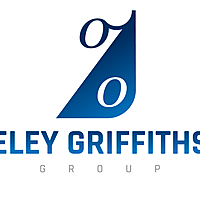Four fundamentals supporting this equity advance
Many of the worlds major stockmarket’s find themselves in a somewhat extended position just as central banks consider tapering or removing liquidity from the system. Investors haven’t missed the fact that major economies are in recovery mode and that an official response is imminent.
One undeniable fact is that equity investors have grown more than a little complacent to the risks of a violent down thrust in markets. Stories abound that ‘short vol’ strategies on VIX futures (measure of implied future volatility) have become the easiest game in town for return hungry institutions. It appears VIX Futures open interest is approaching record levels.
The S&P 500 has traded for more than 12 months without so much as a 5% correction. Even more unnerving that it is the 6th occasion since 1950 that this phenomenon has occurred.
As a manager of some years, I am always alert to the risks inherent in over bought, expensive stock markets (absolutely and relative to bonds) that have diverged dangerously from realistic settings. Complacency on the part of investors breeds bad habits but I feel the fundamentals supporting the current global equity advance remain ok, notwithstanding the observations above these are four fundamentals supporting this equity advance:
- The US yield curve remains positive despite having flattened somewhat from its extreme settings. I watch the UST 10-2yr, 10-fed funds and 10-3mo carefully. Movements in yield curves tend to lead the US earnings cycle by 2-3 quarters normally. Experience has taught me that the curve will invert (turn negative and indicating recession) well before equities commence a major correction. Since 1960, inversions of the UST 10-3mo have presaged every recession recorded-NO false signals. I recall its last inversion happened 18 mo before equities retraced.
- The equity risk premium (ERP) continues to offer tactical allocators a margin of safety in equities over bonds. In Australia the ERP is currently ~ 5.9% and ~ 5% in the US, nicely on the right side of fair value (~4.5%) and not close to traditional market peak triggers of ~2.4%.
- Headlines like ‘Wall Street latest guessing game is to try to pick the market’s peak’ (AFR 20/7/17) suggest to me that a few more bears need to be killed off before the market can top out.
- The technical picture of the worlds share markets remains constructive. The daily value of turnover is high, the breadth (no of stocks participating in the rally) is healthy, rallies are generally occurring in price-and-time balance (NASDAQ 100 the possible exception), and the crucial signs of price action exhaustion (congestion/toping patterns) simply are not to be found in charts of the worlds major indices.
We are in the teeth of the Q2 reporting season in the US and so far there is no indication that an earnings inflection point is close at hand. That might change by season end but so far so good. The market is still gunning for ~ 11% eps growth in 2017.
Locally, the reporting season gets started in the first week of August. Earnings updates have been few in number and a relatively benign season is anticipated. Nevertheless this has the potential to be a volatile window for investors.
Article contributed by Ben Griffiths, Portfolio Manager Eley Griffiths Group
3 topics

